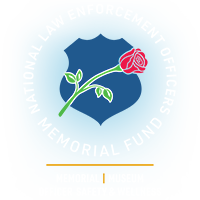The COVID19 pandemic has taken over our lives, and while it is inevitable that people around the world are going to suffer from cabin fever, we can be thankful that we have the internet to occupy our time and keep us up to date on the news and what our law enforcement is doing to keep us safe. This cannot be said about the sufferers of the deadliest pandemic in history: the Spanish Influenza pandemic of 1918.

An image of a quarantine hospital during the Spanish Influenza pandemic of 1918. Image under Creative Commons License
The year was 1918 – the world was coming down from what was known as “The War to End All Wars,” a conflict that would later be known as World War I. Soldiers were getting sick from the squalid conditions of their trenches on the Western Front during the final months of the war, with a little bug now known as H1N1. When H1N1 came back to the home front at war’s end, it exploded into what we now know as the Spanish flu pandemic. This pandemic lasted from January of 1918 all the way through December of 1920 and killed more than 50,000,000 people worldwide indiscriminately.
Spanish Influenza disrupted routines much like Coronavirus is now – endless patients were quarantined and officials feared mass hysteria. People were advised to remain in their homes and to avoid congested areas, just like today. And, just like today, it was up to law enforcement to maintain the safety of the people in their cities and enforce a lot of the stipulations put forth by public health officials at the time.
Police officers are leaders in times of public crisis. Police departments often have in place “pandemic plans,” which are like natural disaster or even terrorism responses that give officers a protocol to follow in order to maintain order in a society that is on the verge of chaos.
Here at the National Law Enforcement Museum, we wondered how law enforcement may have reacted to the 1918 Spanish flu pandemic when 24-hour news cycles and social media were far from existence. So today, we are going to explore the additional roles law enforcement played during the Spanish flu pandemic of 1918 and then ask ourselves how much those roles have changed or remained the same during our current Coronavirus pandemic.

An image of police officers and city officials donning gauze masks to prevent infection from Spanish Influenza during the 1918 pandemic, from the National Archives of the United States under Creative Commons License
Back in 1918, people were genuinely afraid of disease. Medicine was not nearly as advanced as it is today, and this helped law enforcement have a better idea of where to begin when it came to policing a pandemic. Ordinances were passed that allowed trains to deny passengers and gave towns the authority to deny visitors admittance without proper documentation. Other social enforcements included limiting funerals to 15 minutes, the universal donning of gauze face masks, and the prevention of stores from holding sales. It was up to law enforcement to make sure that these widely acknowledged quarantine practices set by the U.S. government were enforced as heavy fines and punishments were to be levied on citizens who failed to comply.
Officers were also tasked with patrolling “quarantine zones,” which were areas of cities that were considered “hot spots” for the disease. In Boston and New York City, police officers enforced measures that closed public meeting spaces like churches, dance halls, gymnasiums, and libraries, making sure that citizens were staying home rather than congregating in large crowds – unless, of course, they were attending War Bond drives. During the Spanish flu pandemic, police officers were the officials on the streets enforcing decisions made by public health officials to reduce the spread of the incredibly contagious disease, and ultimately save lives.
Since 1918, not much has changed on the front of an officer’s role during a pandemic – officers are still patrolling our communities, making sure the public is well-informed, and doing all in their power to maintain the safety of the citizens they have sworn to protect. Today, organizations like the Police Executive Research Forum give police departments an abundance of resources to plan their response to an epidemic long before one occurs. Officers are given the training and tools to create and follow an effective, department-wide response that will keep our communities healthy and safe in our ever-changing world. Our officers today are more prepared than ever to protect our communities during a pandemic.
So while you social distance yourself from your colleagues, work from home, and try to figure out what’s next during this Coronavirus pandemic, think about the officers still patrolling our streets who are not only trying to keep themselves healthy but you and your families as well.
Sources:
https://www.cdc.gov/coronavirus/2019-ncov/index.html
https://www.livescience.com/spanish-flu.html
https://www.policeforum.org/assets/docs/Free_Online_Documents/Public_Health/police%20planning%20for%20an%20influenza%20pandemic%20-%20case%20studies%20and%20recommendations%20from%20the%20field%202007.pdf
https://www.archives.gov/exhibits/influenza-epidemic/
https://www.policemag.com/340153/policing-a-pandemic
https://www.politico.com/news/magazine/2020/03/17/spanish-flu-lessons-coronavirus-133888

